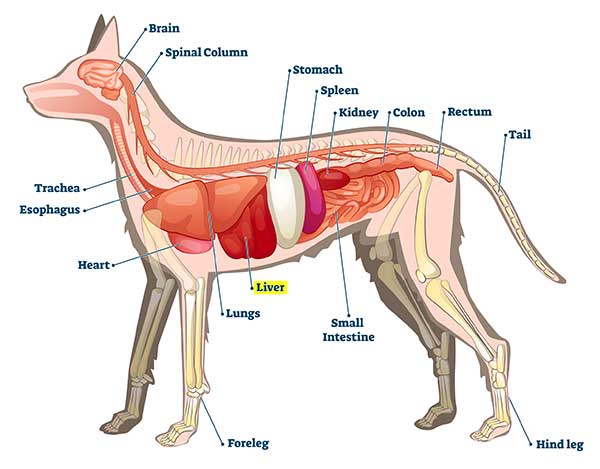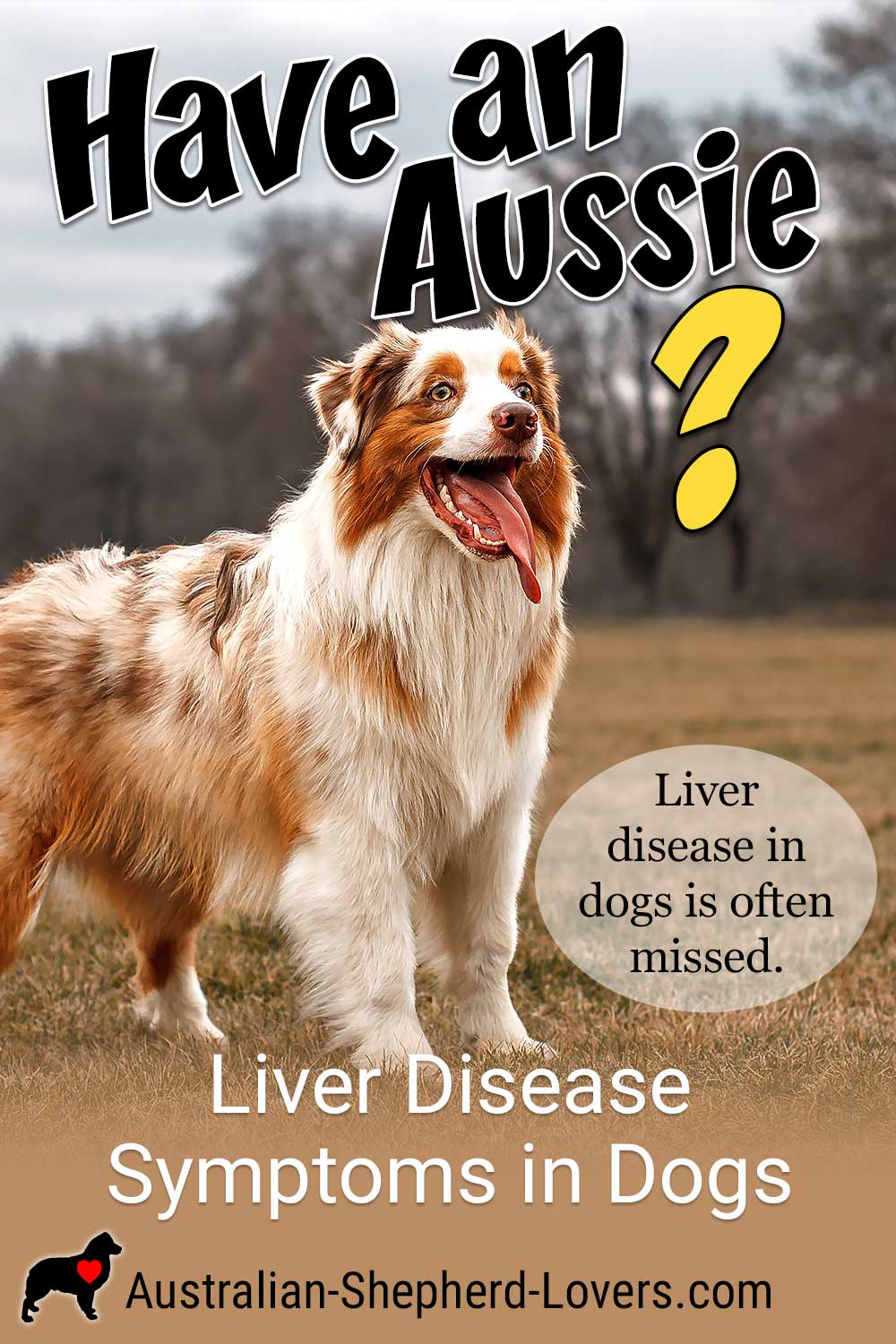
The Liver Disease Symptoms in Dogs You Need to Watch For
Liver disease symptoms in dogs can be a real challenge since they can mimic those of other illnesses. As a result, liver disease is often missed until it has reached an advanced stage. It's important as a pet owner to be aware of the symptoms and also to take your dog for regular annual checkups as that is the best way to catch liver disease in the early stages when it is more easily treatable.
In order to understand the severity of liver disease in dogs you first need to understand exactly how the liver functions. As the second largest organ in the body, the liver performs a myriad of vital functions including metabolizing medications, removing toxins from the body, and creating the protein albumin, blood clotting factors, and other substances that are essential to life.
When you consider how important the liver is, it's easy to see why anything that disrupts healthy liver function could potentially be catastrophic. Since the liver is able to regenerate and also has a large functional reserve, liver disease symptoms in dogs may not become apparent until it is fairly advanced, which is why it's so difficult to handle properly.

Olena Kharina / stock.adobe.com
If your Aussie starts to exhibit any of the liver disease symptoms in dogs it's important to determine the cause and start treatment as soon as possible.
What Causes Liver Disease in Dogs?
There are several different factors that can cause liver disease in dogs. It may simply be due to aging or it could result of trauma to the area, infection, or as a side effect of taking medications. Often it is directly related to improper nutrition, resulting from a diet heavy in fatty foods or from ingesting substances such as ragweed, blue-green algae, certain mushrooms, or mold that grows on corn.
It can also be the result of another medical condition like diabetes, pancreatic illness or cancer. Another potential cause of liver disease is Leptospirosis, a bacterial disease that can be contracted through direct contact with urine from infected animals or through water, soil, or food contaminated with infected urine.
Liver disease in dogs can also be genetic and in fact, Australian Shepherds are more likely to have a genetic liver disorder called portosystemic shunt (PSS). In this condition, some of the blood that should normally go to the liver is directed around it instead, depriving the liver of the blood flow it needs to function properly.
Liver Disease Symptoms in Dogs
So what can you do as a pet owner to help keep your furry friend healthy and avoid liver issues? First and foremost, be aware of the common liver disease symptoms in dogs:
- Loss of appetite
- Weight loss
- Vomiting or diarrhea
- Increased thirst
- Increased need to pee
- An unstable walk
- Confusion
- Jaundice – i.e., yellowish eyes, gums, tongue
- Signs of weakness
- Blood in urine or feces
- Seizures
- Ascites (fluid buildup in the belly)
Because the liver is responsible for removing toxins from the body, liver disease in dogs that isn't caught early can lead to a dangerous build-up of toxins that may result in hepatic encephalopathy, a serious brain condition.
Seeing Signs of Liver Disease in Your Aussie?
If you are seeing the common liver disease symptoms in dogs, you should get your pet to the vet as quickly as possible since it will be necessary to perform a series of clinical tests in order to conclusively determine the presence of liver disease.
In most cases, your vet will perform a complete blood count (CBC), serum biochemical profile and a urinalysis to detect the signs of liver disease. It may also be necessary to perform an ultrasound examination of the liver and gall bladder in order to determine the exact type and severity of disease and to determine the proper course of treatment.
Treating Liver Disease in Dogs
Treatment of liver disease in dogs depends on how early you catch the disease and the underlying cause. In most cases, treatment will involve targeting the underlying cause and treating symptoms. Depending on the symptoms that are present, your dog may require immediate administration of intravenous fluids in order to prepare him for longer term treatment.
As challenging as liver disease may be, there are actually several different avenues for treatment depending on the underlying cause, the severity, and the specific liver disease symptoms in dogs that are present. The main treatment approaches are dietary changes or supplements such as SAM-e to help ensure that your dog is getting the nutrients and calories he needs.
If an infection is present, antibiotics can be used to treat it and you may need to make adjustments to any other medications your dog is taking or change their medications entirely to prevent any complications. In the most severe cases, where tumors or cysts are present, surgical intervention may be necessary.
Liver Disease in Dogs Can Be Successfully Treated
Regardless of the specific form of treatment, it is important to keep a close eye on your dog's health and have regular reassessments from your vet so that he can monitor the effectiveness of the treatment and the condition of the liver. In many cases, it may be possible to discontinue treatment once the liver issue is resolved.
Though it can be difficult to detect, in most cases liver disease can be treated and managed and your pet can live a normal life. Of course the best thing you can do for him is to be aware of the liver disease symptoms and catch it early. Make sure you feed him a healthy diet with all of the proper nutrients and take him to the vet for regular exams. With the proper preventive measures you can help to keep your dog happy and healthy for years to come.
For more information about Australian Shepherd health issues see the Australian Shepherd Health & Genetics Institute (ASHGI).
Have Dog Training Questions?
Check out these introductory dog training videos...
I want my dog to stop being aggressive.
I want some help training my new puppy.
I want my dog to stop barking at everything.
Get Australian Shepherd Info, Website Updates, Special Offers, and Cartoons...
FREE GIFT
You'll also receive a free copy of the ebook
My Everyday Dog Training Tools
by professional dog trainer Daniel Abdelnoor, "Doggy Dan"












 Loading Image...
Loading Image...